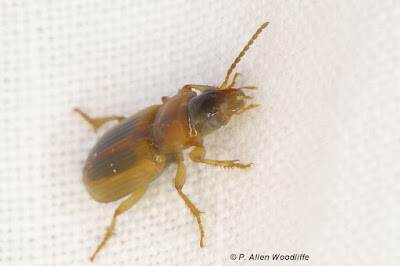I have featured many different types of creatures over the years, but sometimes those lesser-known creatures get left behind. As most readers will know, I focus a lot on moths at the black light, but when other interesting creatures arrive, I don't often pass them up if they seem to be distinctive and large enough to photograph. They all have a role to play in nature, and we do them a disservice by ignoring them, even though we might not know exactly what role they play. So with this post, I will feature some of those that I have captured coming into my black light over the past few months.
This first one is rather large, and distinctive. It is a Grapevine Beetle, not all that uncommon.
 | |
| Bombardier Beetle |
 |
| Dendroides concolor |
 | |||
| Flower Longhorn Beetle |
 |
| Cranefly (Limonia immatura) |
.....followed by a Soldier Beetle (Rhaxonycha bilobata)....
...and then a Striped Deer Fly.
 |
| Furrow Spider |
Rounding out some of those found at Rondeau is this quite large Water Scavenger Beetle. When one of these arrive, they create a noticeable 'thunk' when they hit the sheet.
Not to be out done, there are some that have come into my backyard lights as well, although most are relatively common. Caddisflies are abundant wherever you set up, it seems. There are many different kinds and sizes, but not all that well known at the species level I am finding.
A Green Burgundy Stink Bug shows up periodically.
This is a Leconte's Seedcorn Beetle
 |
| Masked Hunter |
A member of the Short-tailed Ichneumon Wasp group is this member of the Ophion genus.
A relatively common beetle is this Platynus cincticollis, which doesn't have a common name that I have come across.
 |
| Posterior Brown Lacewing |
And finally, a type of Stonefly of the Isoperla genus.
These are just a few of the many, many non-moth species I have photographed over the several years of black lighting. Maybe I will feature a few more in a future post!
If you would like to subscribe, or unsubscribe, to Nature Nuggets, send an email to: prairietramper@gmail.com

















No comments:
Post a Comment